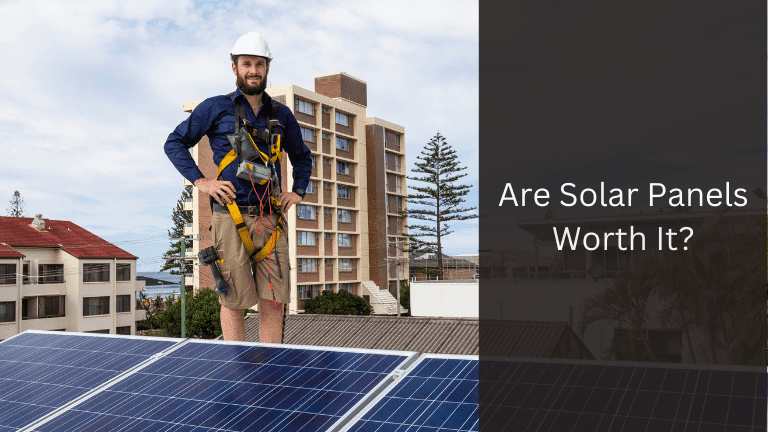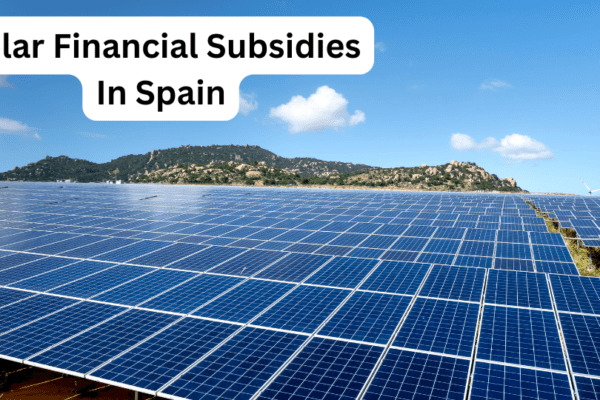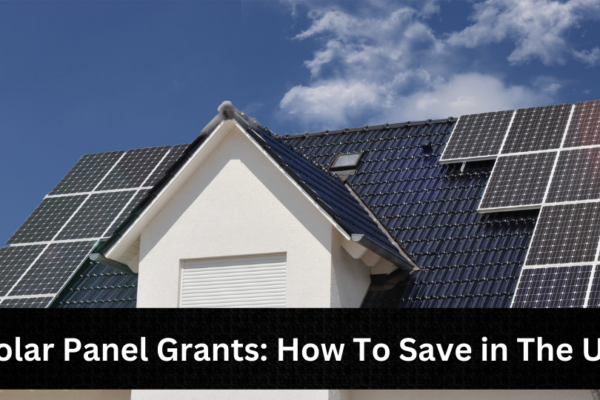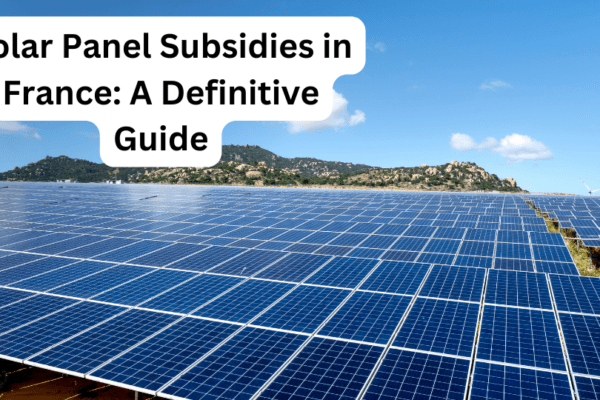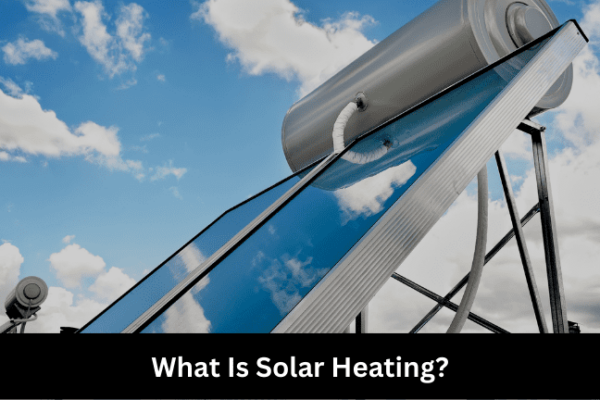Less than 5% of the world’s energy comes from solar panels. And yet the sun supplies 10,000 more times more energy than what we produce from all nuclear, gas and all our other energy sources combined.
Why then are we not using more solar panels? Until recently the biggest obstacle has been the expense although this has started to change as solar panel prices fall. In this deep dive we critically examine whether installing solar for your home or business is worth it.
Over the course of this short guide, we will cover how solar panels work, what their pros and cons are, and the overall costs involved. By the end of this guide you will have a comprehensive understanding of whether solar is right for you.
Solar Technology Explained
The modern silicon solar cell was invented in 1954. Although there are older non-silicon cells that date as far back as 1883, the silicon cell was the first that could power an electrical device for several hours.
One of the earliest known uses of a solar cell were solar powered watches and calculators. In 1973, the first solar powered building, did not use solar panels but rather used solar roof tiles similar in design to Tesla roofs.
Types Of Solar Panels
Solar panels work by converting sunlight into electricity in a process known as the photovoltaic effect. Light from the sun carries packets of energy contained in cells called photons. These photons charge the electrons in a solar cell creating the electric current that powers the appliances in a home.
Solar panels come in different sizes. The solar panels used to power a home or large building consist of between 60 to 72 solar cells wired together, each producing between 0.5 to 0.6 volts. Typically, we use the larger solar panels for commercial buildings.
There are three main types of solar panels that dominate the consumer market today. These are monocrystalline, polycrystalline and thin-film.
Monocrystalline (Mono-Si)
Monocrystalline solar cells are made from a single crystal of silicon. This gives them their dark black color. Monocrystalline is the most efficient and also most expensive solar panel. Efficiency in a solar panel is a measure of how much solar energy a cell converts to electricity.
The average efficiency of monocrystalline is between 18 to 22 percent.
Polycrystalline (Poly-Si)
Polycrystalline solar cells are also made from silicon. They are different from monocrystalline solar cells in that they are made from multiple pieces of silicon rather than one. This is why polycrystalline solar cells have a speckled blue color. Polycrystalline is slightly less efficient than monocrystalline, but is cheaper.
The average efficiency of polycrystalline is between 18 and 20 percent. Together, polycrystalline and monocrystalline make up 90 percent of the solar panel market.
Thin-film
Thin-film is a broad category of solar cells made from a variety of materials including silicon, cadmium (CdTe) or copper (CIGS). The biggest drawback to thin-film solar cells is they have the lowest efficiency which makes them unsuited for most Northern climates. On the other hand, thin-film solar panels are typically half the price of either monocrystalline or polycrystalline.
The average efficiency of thin-film is between 9 and 13 percent.
Solar System Design
There are two main designs used for solar systems. These are grid-tied and off-grid.
Grid-tied
A grid-tied solar system is one that is connected to a major electricity grid. In this case your system is connected to the power utility. The biggest advantage to this type of system is that it allows you to sell electricity back to your utility provider as a feed-in-tariff.
The disadvantage to this system is it does not work if there is a blackout. As soon as the grid goes down, it shuts down. This is to prevent it from feeding electricity back into the grid which can be a hazard if there are any repairs being carried out on the grid.
Off-grid
An off-grid system as you may have already guessed, is one that is not connected to the grid. In this setup your solar panels and any additional power source you have provide all your electricity needs. The biggest upside to an off-grid system is you do not have to worry about a blackout as this is a self-contained system.
The downside to the system is it is more expensive since it has to be sized large enough to provide all your electricity. In a grid-tied system you can switch between the grid and your solar panels.
Installation Of Solar Panels
Solar panels can be installed on a roof or on the ground.
Roof-mounted
The biggest advantage to roof mounted solar panels is they take up less space on your property. It is also typically cheaper and more secure.
Ground-mounted
Ground-mounted solar panels are easier to maintain. They do however, take up more space on your property so they are not ideal for most installations. They also require more labor and material (mounting platforms) which makes a ground-mount more expensive.
Components of A Solar System
Depending on how it is designed, a solar system requires solar panels, inverters, batteries and charge controllers. Solar panels produce the electricity for you to use. But what are the other components for?
Inverters
Solar panels produce direct current (DC). Direct current is a more efficient way to move electricity from where it is generated to where it is used because it has less voltage loss.
The appliances in your home use alternating current (AC), however. Inverters convert the direct current solar panels produce into alternating current appliances use. There are several types of inverter systems but the most common are grid-tied, off-grid and hybrid.
Grid-tied inverters are used for grid-tied systems. They have an anti-islanding feature that shuts down your system when the grid goes down in a blackout.
Off-grid inverters are used for off-grid systems. They do not connect to the grid so they do not have an anti-islanding feature.
Hybrid inverters are used in both grid-tied and off-grid systems. They can be run even in the event of a blackout. They also allow you to sell electricity back to the grid so they combine the best features of both grid-tied and off-grid inverters.
Batteries
Batteries store the energy produced by a solar panel. They are the single most expensive component of a solar energy system. Fortunately, you do not always need batteries. They only become necessary in an off-grid system or if you want to use your solar energy after dark. There are three main types of batteries used in solar systems.
Lithium batteries are made from the same raw materials your laptop or mobile phone battery has. Lithium batteries are also used to power most of the electric vehicles on the market today. The biggest advantage to lithium for solar is that they hold more usable energy. Their biggest downside is they are the most expensive.
Sealed lead acid (SLA) batteries are the next best alternative to lithium. While they will not give you as much energy as the same size lithium battery, they do have the advantage of being much cheaper.
Flooded lead acid (FLA) batteries are possibly the oldest battery technology. The batteries that run conventional fossil fuel powered cars are lead acid batteries. The difference is solar lead acid batteries have a bigger capacity.
FLA batteries are cheaper than either SLA or lithium. The biggest disadvantage to FLA batteries is they require maintenance where lithium and SLA do not require any.
Charge controllers
Charge controllers regulate the voltage and current produced by a solar panel before sending the electricity to a battery. They protect the battery from overcharging or getting drained by solar panels. Charge controllers are only necessary in a system with batteries.
We have looked at how solar works and what the design and components of a solar energy system are. But what are the reasons for getting solar panels and what are the arguments against?
Why Should You Install Solar?
The main benefits to owning a solar energy system are as follows.
Energy Savings
Depending on the size of your system, solar can help you realize savings of between 20 to a 100 percent on your electricity bill.
For example, a system that provides all your electricity completely offsets your bill. That means you produce and consume all your electricity at no cost to you. One way to make absolutely sure you realize maximum savings from your system is to get efficient solar panels. Take our short quiz and get free solar panel quotes.
Clean Energy
Energy consumption is the second biggest producer of carbon emissions. The energy from your utility is produced from burning fossil fuels which produce greenhouse gases that are harmful to the environment.
Making your home more energy efficient and switching to a renewable energy source like solar helps you reduce your carbon footprint. This has a massive impact on reducing global warming. Solar panels can offset up to 138 metric tons of carbon emissions per year.
Home Value
Solar panels increase the value of your home. According to research, installing solar panels increases the value of a home by up to 4 percent. This can become a bonus if you decide to sell your property. On average, energy efficient homes sell faster than homes less efficient.
Payback Period
Payback period is how long the system takes to pay for itself in terms of savings. Depending on the specifics of a solar panel system (size of the system and the type of solar panels used) you will see a return on your investment at between seven to ten years.
Energy efficient homes and solar systems with a higher power output shorten the payback period. One way to improve your system output is through efficient solar panels. Take our short quiz and get quotes for efficient solar panels.
Easy Set Up
Compared to other renewable energy solutions, solar has the easiest setup. Installation of solar panels is more practical especially in an urban setup. Also, solar has a higher energy yield than most renewable energy deployments at a residential level.
Wind is perhaps the closest alternative, but unless you are in a rural environment, this is not a viable solution for most.
The Main Reasons Not To Install Solar
Solar energy is not without its flaws however. These are the two biggest disadvantages you need to consider.
Unreliable
Solar energy is not as reliable as grid supplied electricity because it depends on the sun shining. In colder climates, solar has a slightly reduced output. While you will still see savings from solar, they will not be the same as those of someone in a warmer climate.
This in turn increases your payback period. There is a significantly longer wait to see your return-on-investment the colder your climate is.
High Upfront Cost
The biggest disadvantage to solar for most people is still the cost. While the cost of solar panels has fallen by 83 percent in the past decade it is still considerably expensive. Fortunately, there are solar panel subsidies, loans and tax breaks you can take advantage of that can reduce the cost by anywhere from 30 to 100 percent.
Renewable energy incentives are finite and time sensitive, however. They get reduced as more people switch to renewables so if you want to capitalize on them you have to move as soon as you can. Take our short quiz to find get free quotes from solar panel installers near you.
Solar FAQs
Do Solar Panels Work At Night?
Solar panels produce convert sunlight into electricity. This happens only during the day. Energy storage in the form of batteries allows for extended use of solar panels at night.
Do Solar Panels Work In Cloudy Conditions?
Solar panels can produce energy even in overcast conditions. While the output is reduced to as little as 10 percent in rain, they will still generate electricity.
What Is The Lifespan Of A Solar Panel?
Most manufacturers guarantee their solar panels for 25 years. In practice, solar panels last longer. They do however, experience a minimal decline and produce less energy as they age. At the 25 year mark, a solar panel produces up to 80 percent of its rated capacity.
